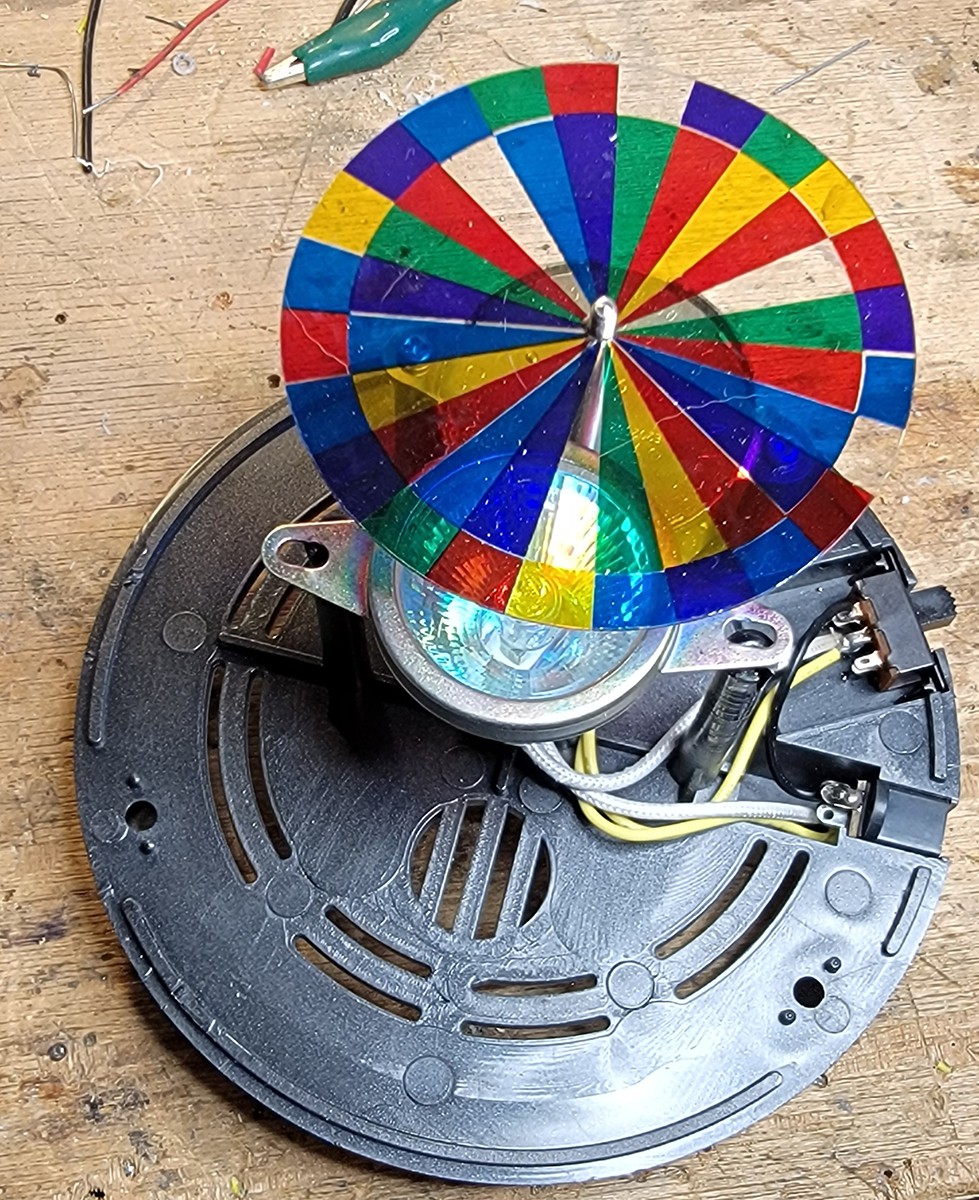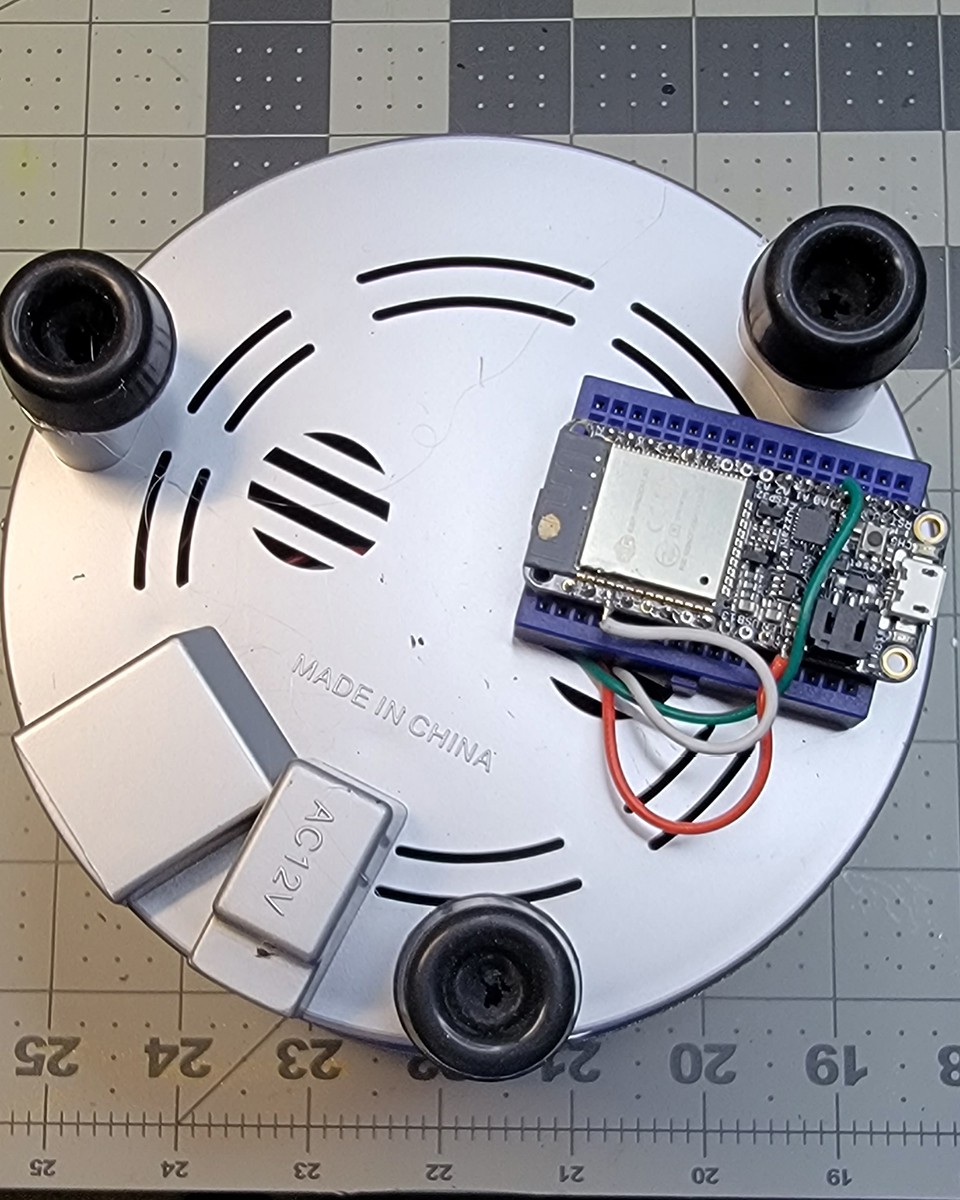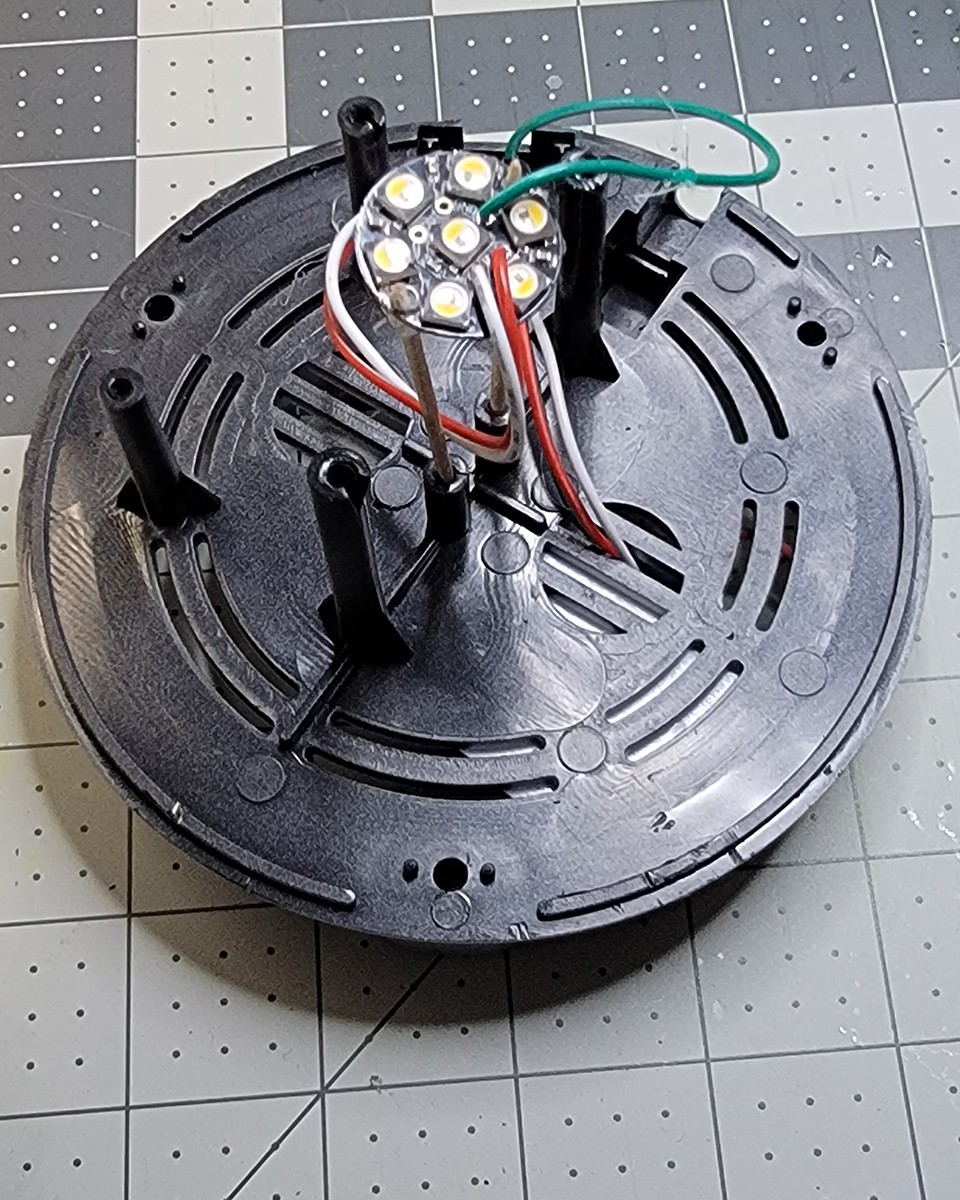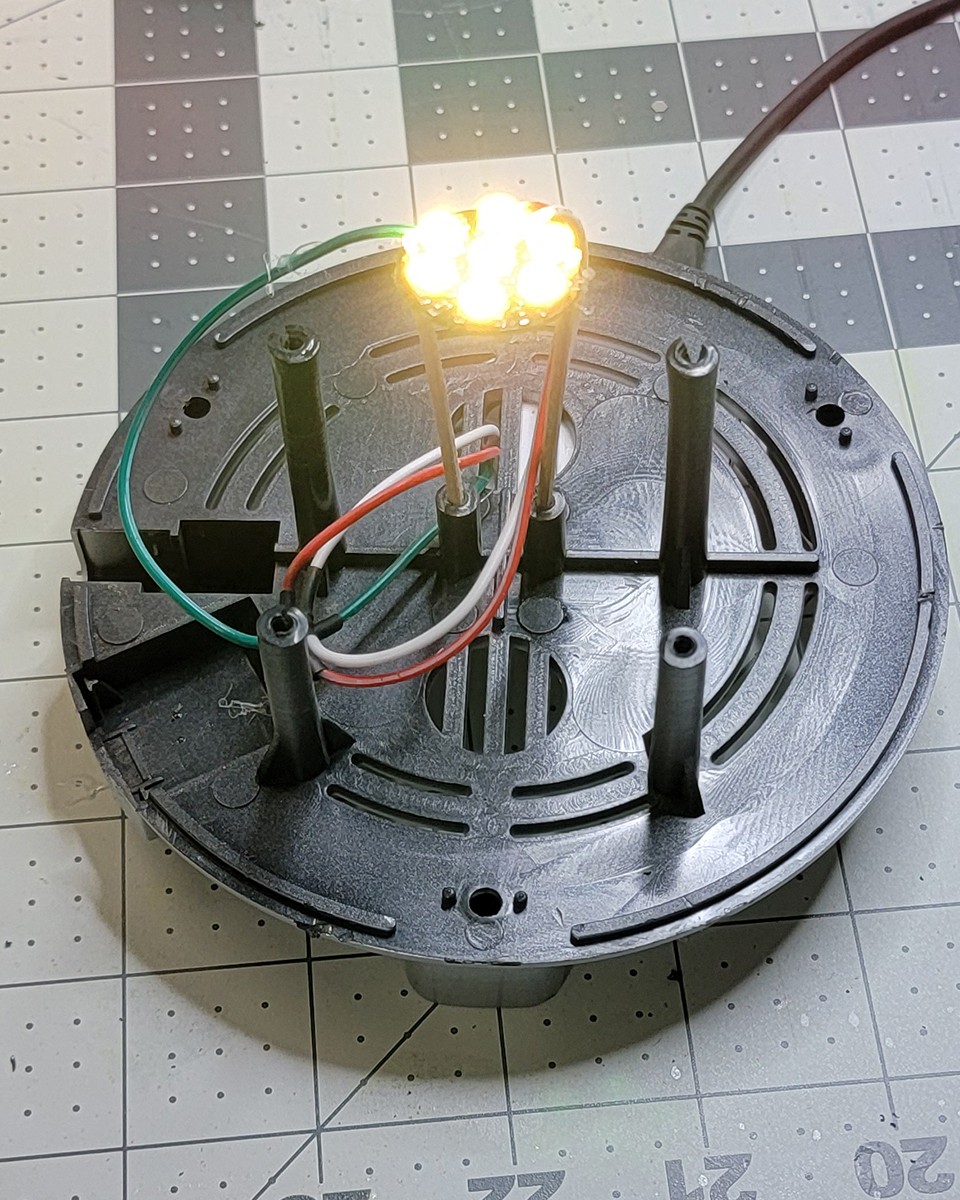-
1Take the tree apart
This part was pretty easy. There were three screws in the base. As you can see, there's a halogen light, a motor, and color disc. As it turns, the fibers on the ends of the branches change color.
![]()
I removed the components.
-
2The processor
Here's the ESP 32. I used a tiny breadboard with an adhesive strip so I could affix it to the base of the tree. I was also experimenting with some glued on feet, and that was a fail. The feet built into the base are *just* long enough to provide clearance for the ESP 32. I may 3D print something yet.
![]()
I ran the wires through one of the vent holes and soldered it to the light, which is the next step.
-
3Add the light!
I used a Neopixel Jewel, which is just about the same size as the opening in the case where the tree sits. In this picture I'm using toothpicks, which just fit in the holes where the light was attached. I ended up cutting the umbrellas off of a couple of cocktail garnishes. The toothpick end fit right in the holes, and they were long enough to reach the bottom of the cylinder on the base where the tree attaches. This meant virtually all of the light went straight to the fiber bundle.
![]()
I glued everything in place with a bit of E6000 at the base and Helmar 500 on the Neopixel Jewel.
![]()
Let there be light!
-
4Coding
I used some of the projects on the CheerLights site for inspiration. I'm still tinkering with the code and plan to post the finished code later.
-
5Let there be a lighted tree!
I'm powering this with a USB cable and wall wart.
![]()
Frankly, it's a lot brighter than the original hardware and uses a fraction of the power.
-
6Change the color!
All you have to do is tweet a color to @cheerlights, and the tree will change color.
-
7Additional fun
We were admiring the tree one day and my husband said, "wouldn't it be fun if we could change the color anytime we want?" So I put a web page together and updated the Arduino code so it would take either the latest CheerLights color or the one we send and push it to the tree. I'm still cleaning up that code and troubleshooting.
CheerLights Christmas Tree
What do you do with an old fiber-optic Christmas tree? Make it better, of course!
 Julie Barrett
Julie Barrett




Discussions
Become a Hackaday.io Member
Create an account to leave a comment. Already have an account? Log In.